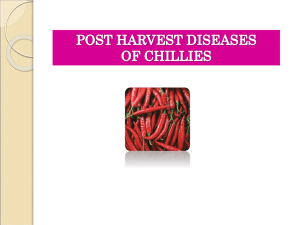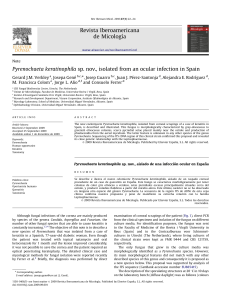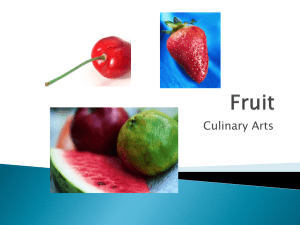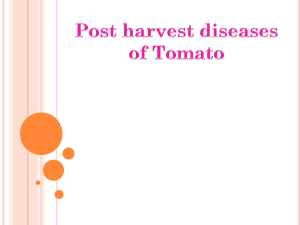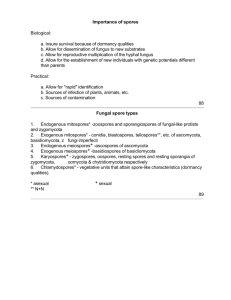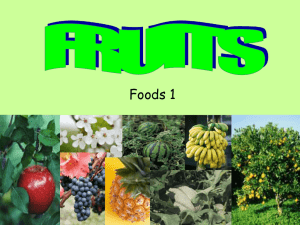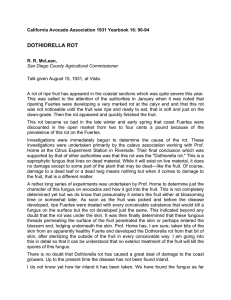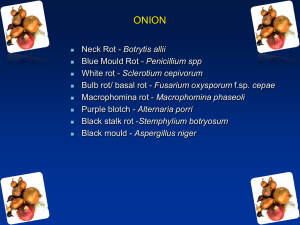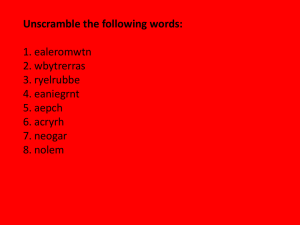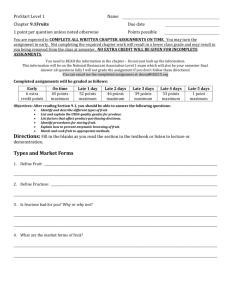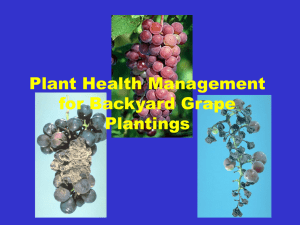Brinjal
advertisement
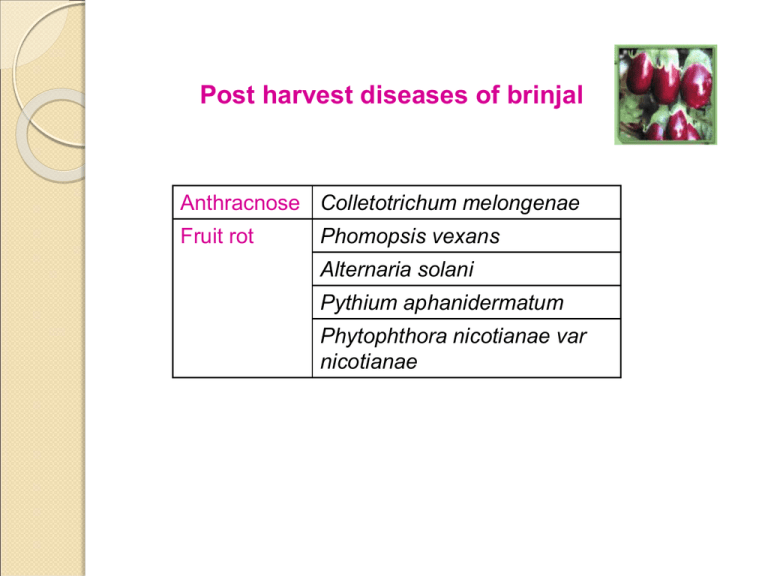
Post harvest diseases of brinjal Anthracnose Colletotrichum melongenae Fruit rot Phomopsis vexans Alternaria solani Pythium aphanidermatum Phytophthora nicotianae var nicotianae Fruit rot - Phomopsis vexans First phase - blight on young seedlings Stem - girdled slightly above the soil line, plant topples and dies Stem lesion - dark brown, becoming grey in the centre as pycnidia develops Leaf - irregular brown spots Fruits – soft, watery & decays Finally black, mummified as pycnidia develop abundantly over the surface Fungus Pycnidia - with or without beak, brown to black Conidiophores - hyaline, simple or branched, Conidia from pycnidium Conidia - hyaline, one celled and subcylindrical Stylophores - filiform, curved, hyaline, septate Mode of spread and survival Seed borne Spread by rain splashes, implements and insects Survives in infected plant debris in soil Epidemiology Temp - 29oC (fungal growth) Storage rot of fruits is maximum at 25oC Management Seed treatment - hot water @ 50oC for 30 min Nursery - 0.2 % difolatan or captan 0.2% @ weekly interval Field - Zineb 0.2 % Bordeaux mixture 0.8% Fruit rot - Alternaria solani Small, concentric dark brown & sunken spots Spots coalesces & covers entire fruit Fungus Hyphae - septate, branched, light brown becoming darker with age Conidia - single, muriform, beaked and dark in color Source of infection - infected seeds and plant debris Pusa purple - moderately resistant Alternaria solani conidia. Note the transverse and vertical septa and the long "beak Favourable conditions Temp - 25 to 30oC Sporulation – abundant when rains are frequent and heavy Mode of survival and spread Conidia and mycelium in the soil and debris - remain viable for > 17 months Conidia are windborne Control Spraying of zineb 0.2 % or mancozeb 0.2% Fruit rot - Pythium aphanidermatum Referred as cottony leak Decay begins at blossom end Purple colour of the skin bleaches and turns to tan and wrinkling follows Fleshy tissue becomes watery White cottony mycelium of the fungus covers the surface Fungus Mycelium - coenocytic, white and measures 2.8 - 7.5 μm in dia Produce sporangia, zoospores, and oospores Oogonia - spherical, smooth walled, terminal on lateral hyphae Mode of spread and survival Survival: Through oospores present in the soil Spread: Through irrigation water, implement during cultural operations Favourable conditions Excessive soil moisture High humidity Over crowding of seedling Control Remove affected plants and burn Avoid water logging condition Drench the soil with 1% Bordeaux mixture Fruits should not be allowed to touch the soil Do not store the infected fruits with healthy fruits Fruit rot - Phytophthora nicotianae var nicotianae Fruits - Small, water soaked lesions Skin - discoloration, turns greyish brown, and develop white cottony mycelium in humid weather Rotten parts become depressed and develops wrinkles Rotting spread deep into the pulp and turns brown, watery & soft Rapidly spreads during rainy season Fungus Hyphae - 5 to 6 μm in dia Spherical hyphal swellings are common Zoosporangia - sub hyaline, oviod, pyriform borne on short stalk A: Sporangia. B: Zoospore. C:Chlamydospore. D: Oospore. Control Removal and destruction of the affected fruits Spraying the crop with Difolatan (0.3%) thrice at an interval of 10 days effectively controls the disease Anthracnose - Colletotrichum melongenae Sunken lesions on fruits vary in size Upto 1.3cm wide and may coalesce Tan colored ooze of fungal spores appear on lesions Fruit dries & become black – fruit drop Fungus Mycelium - septate, branched & light pink to brown Acervuli - simple globose and dark brown Conidiophore - erect and hyaline Conidia - hyaline, one celled, oval or oblong Mode of spread and survival Survives on crop debris as acervuli Spores dispersed by rain splash Epidemiology RH - 100% Temp - 21 to29oC Control Field sanitation - destruction of infected plant debris Other host plant - S. torvum Harvesting of fruits before they over ripe Zineb or ferbam spray at 10 days interval
